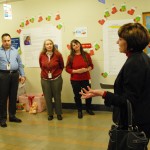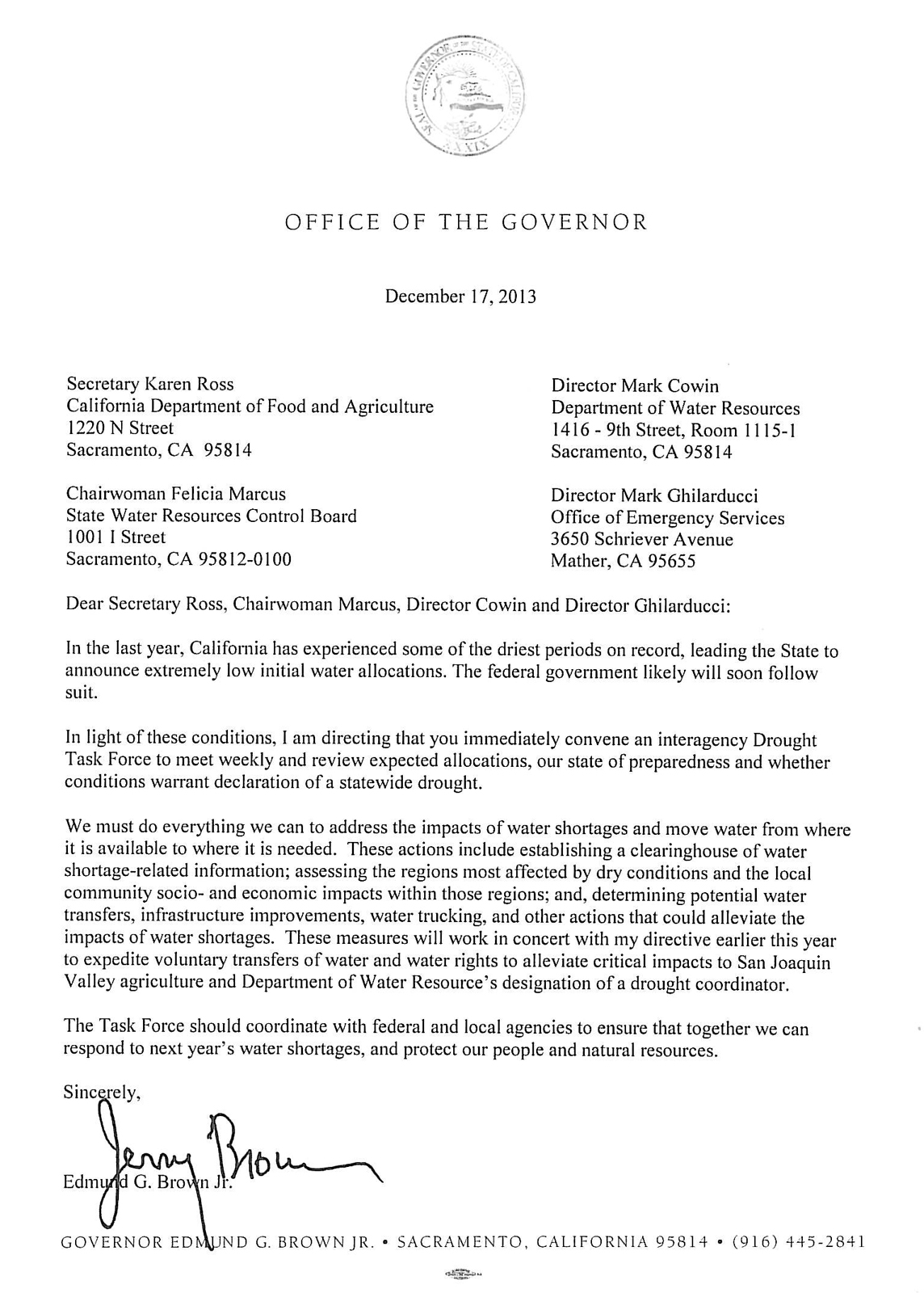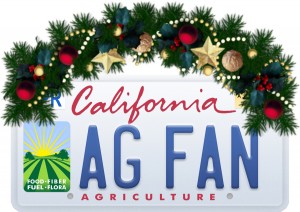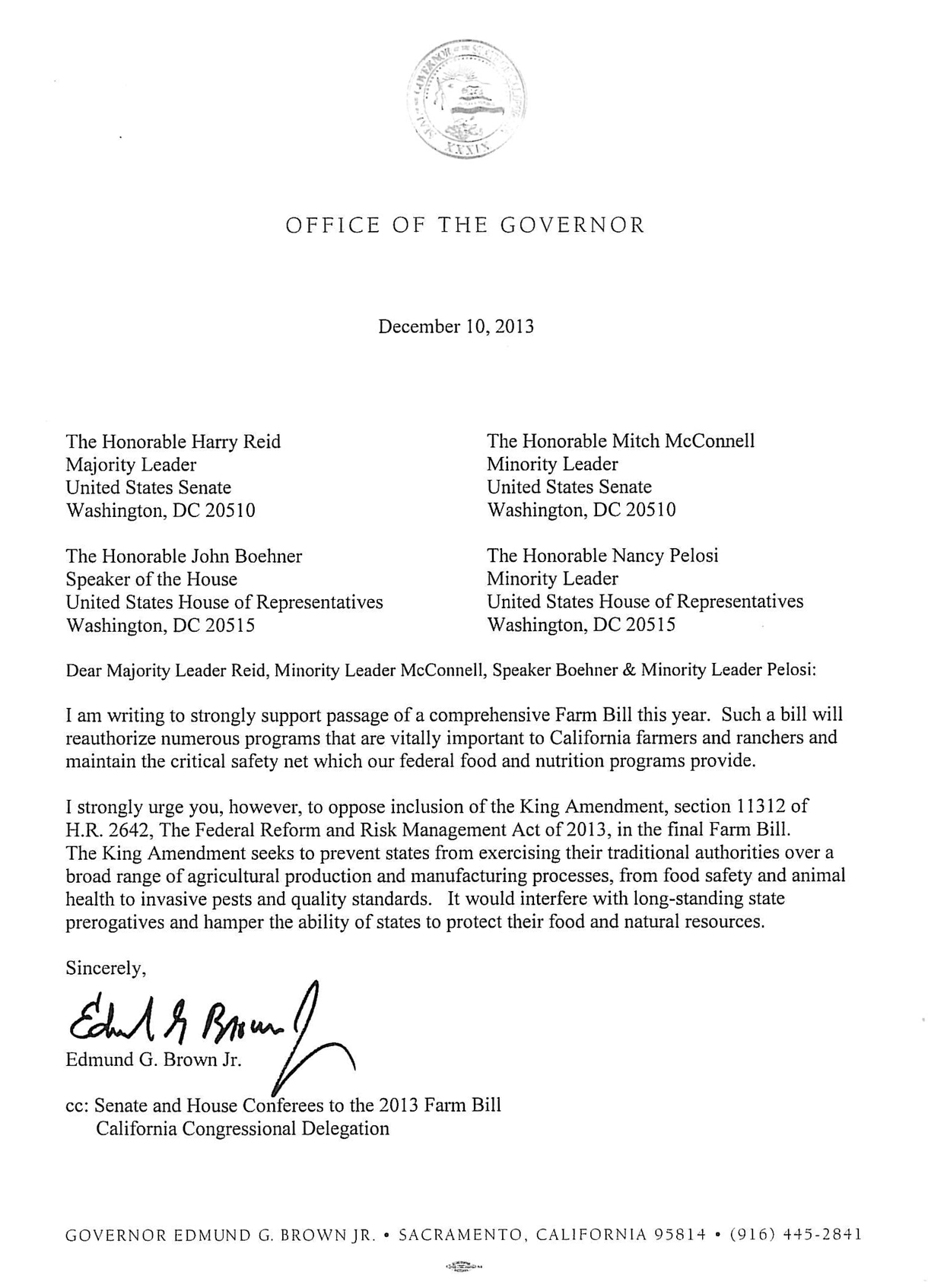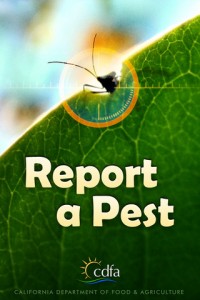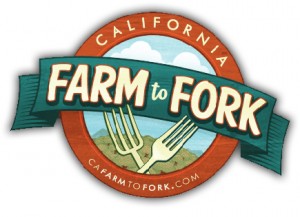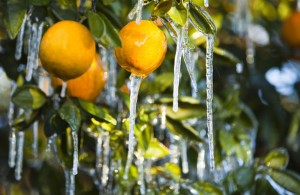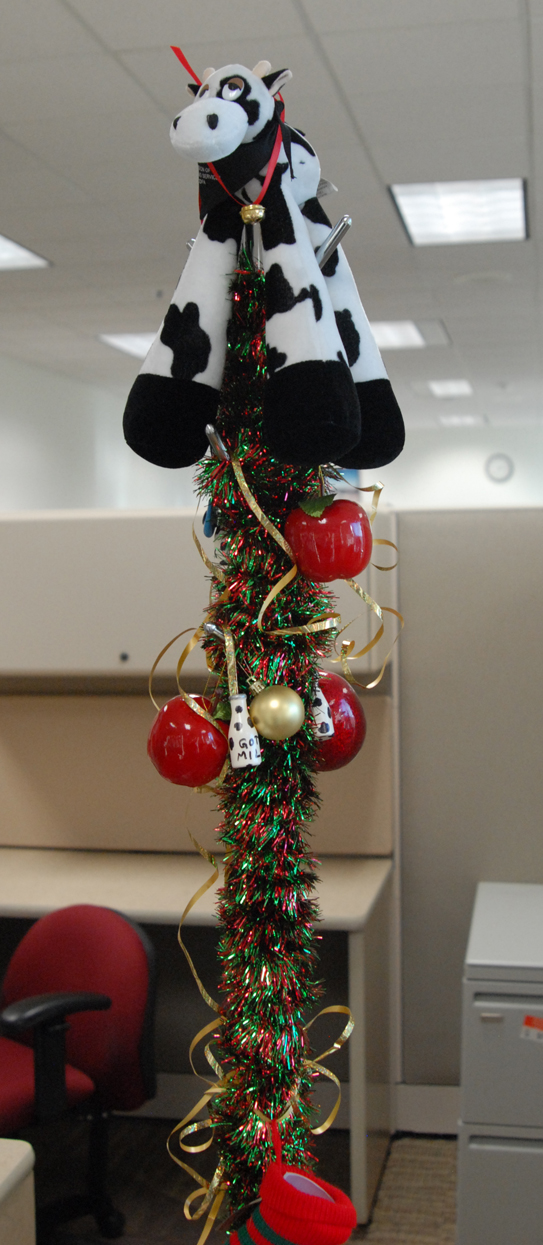
Can’t fit a tree in your cubicle over at the dairy office? No problem. Decorate the coat rack instead!
I don’t know about you, but my office is filled with holiday spirit this year! Ornaments abound, along with snowy gnomes, red and green stockings, even little reindeer made with chocolate bars and pipe cleaners – the stuff of celebration is everywhere. It takes more than a little work to transform a suite of government-office cubicles into a winter wonderland, but the public servants here at the California Department of Food and Agriculture have really outdone themselves this year. It would be enough to say they’re just enjoying the holidays, which they certainly are – but if you look more closely, you’ll also see that they’ve incorporated a good deal of charitable giving under their trees. In addition to collecting food donations for the annual State Employees Food Drive, our CDFA staff has taken the initiative to “adopt” local schools and programs and give them a little extra help.
I sincerely appreciate the work that my CDFA employees do every day to protect and promote California agriculture. They do this important work quietly, efficiently and without fanfare. That is as it should be, but I wanted to take a moment to publicly say “Thank you” for both their professional dedication and their community service. As I visited several of our local offices recently to share a cup of hot cocoa and a cookie (okay, four) with my staff, I took pride in their willingness and eagerness to give:
Project Ride – CDFA’s Plant Pest Diagnostics Center in the Sacramento area chose to collect donations this year for Project Ride (Riding Instruction Designed for Education), which provides therapeutic recreational horseback riding instruction to people with special needs. The program is located in Elk Grove, CA and serves 500+ students from throughout the region, ages 3 to 92. The students learn to ride, but along the way they also play games and activities that teach the alphabet and numbers, shapes, colors, directions and more. Donations range from equine toys for the students to shovels and tools for the volunteers.
Mustard Seed School – Employees at CDFA’s headquarters “adopted” this school which was created in 1989 to offer a free, private education for homeless children 3-15 years old in the Sacramento area. For many reasons, from their simple lack of a home address to lost birth certificates or missing immunizations, many homeless school-age children do not attend school. This program gets kids back into the classroom, and it also strives to prepare and enroll homeless children in local public schools as their families find housing and stability. Our employees’ donations quickly reached “pile” proportions and ranged from utilitarian (crayons and glue) to playful (Spiderman!) and protective (umbrellas, gloves).
Edward Kemble Elementary School – Our department’s Center for Analytical Chemistry (we just say “Chem Lab”) is collecting supplies to donate to this elementary school just down the street in the lab’s South Sacramento neighborhood. Thanks to our employees, the kids at this school will receive a long list of school supplies from their wish list.
Thank you to everyone here at CDFA who supports these worthy programs.
- Secretary Ross chatting with employees in the lobby at CDFA headquarters.
- “C-D-F-A” spelled out in ornaments on the tree at the Center for Analytical Chemistry.
- Ornaments were everywhere at CDFA’s Center for Analytical Chemistry this year.
- Can’t fit a tree in your cubicle over at the dairy office? No problem. Decorate the coat rack instead!
- In the lobby at CDFA headquarters.
- Donations for the Mustard Seed School served double duty as ornaments on the third floor at CDFA headquarters.
- Secretary Ross thanks employees for their charitable spirit after hearing a presentation about the Mustard Seed School.
- Donations for the Mustard Seed School pile up at CDFA headquarters.
- Visiting with CDFA’s Inspection Services staff.
- A visit with the staff at the Division of Measurement Standards.
- CDFA Environmental Scientist Nelida Castillo-Padron presents a colorful strand of lights to Secretary Ross during her visit at CDFA’s Center for Analytical Chemistry.
- Secretary Ross trades holiday stories with employees at the Plant Pest Diagnostics Center.
- Marisa DeSalles (center) with Project Ride gave an uplifting presentation about her organization for Secretary Ross (on her right) and staff at the Plant Pest Diagnostics Center.
- Donation box at CDFA for Edward Kemble Elementary School.
- Stockings for each and every elf at the CDFA Audits Office.









